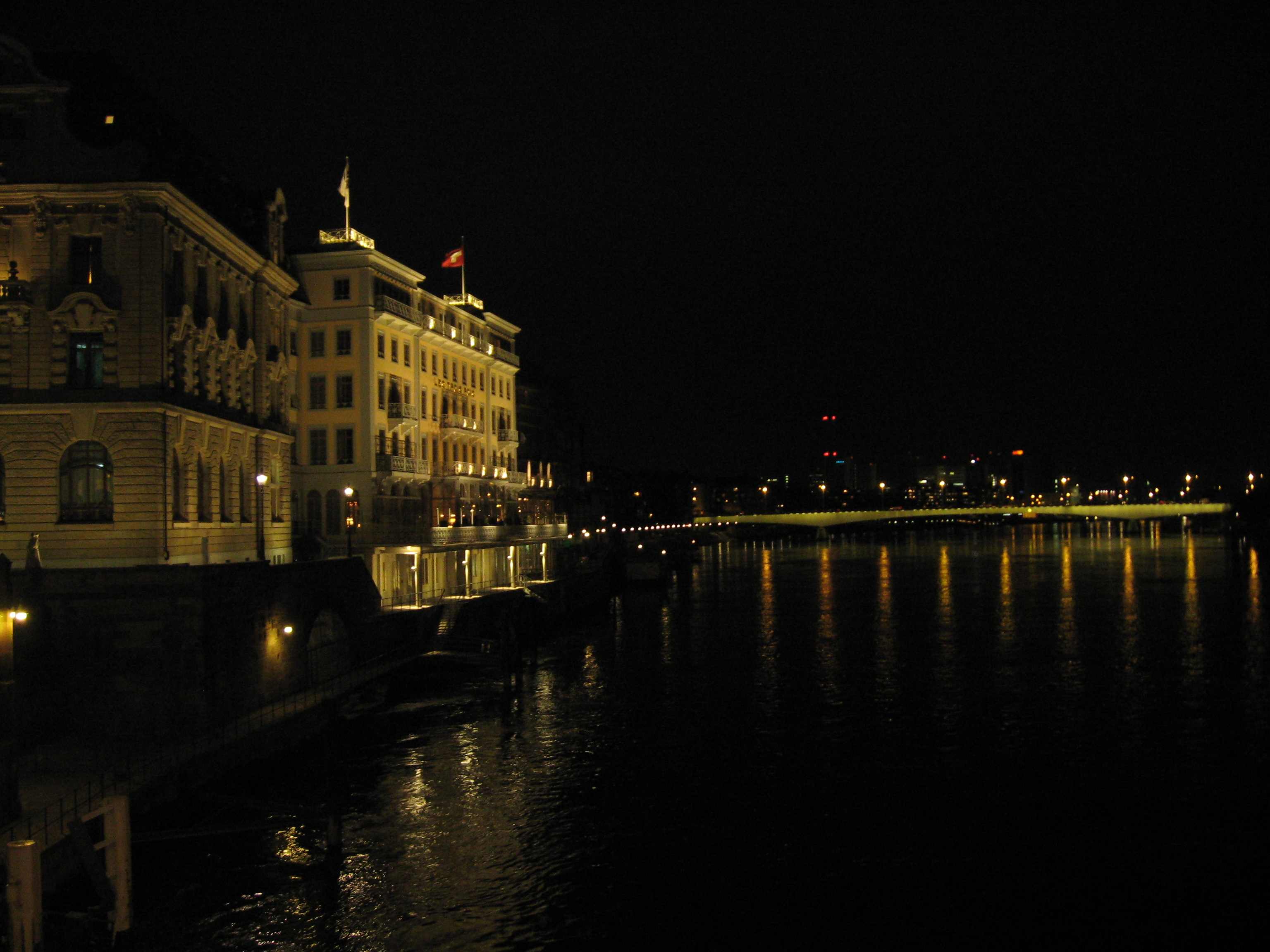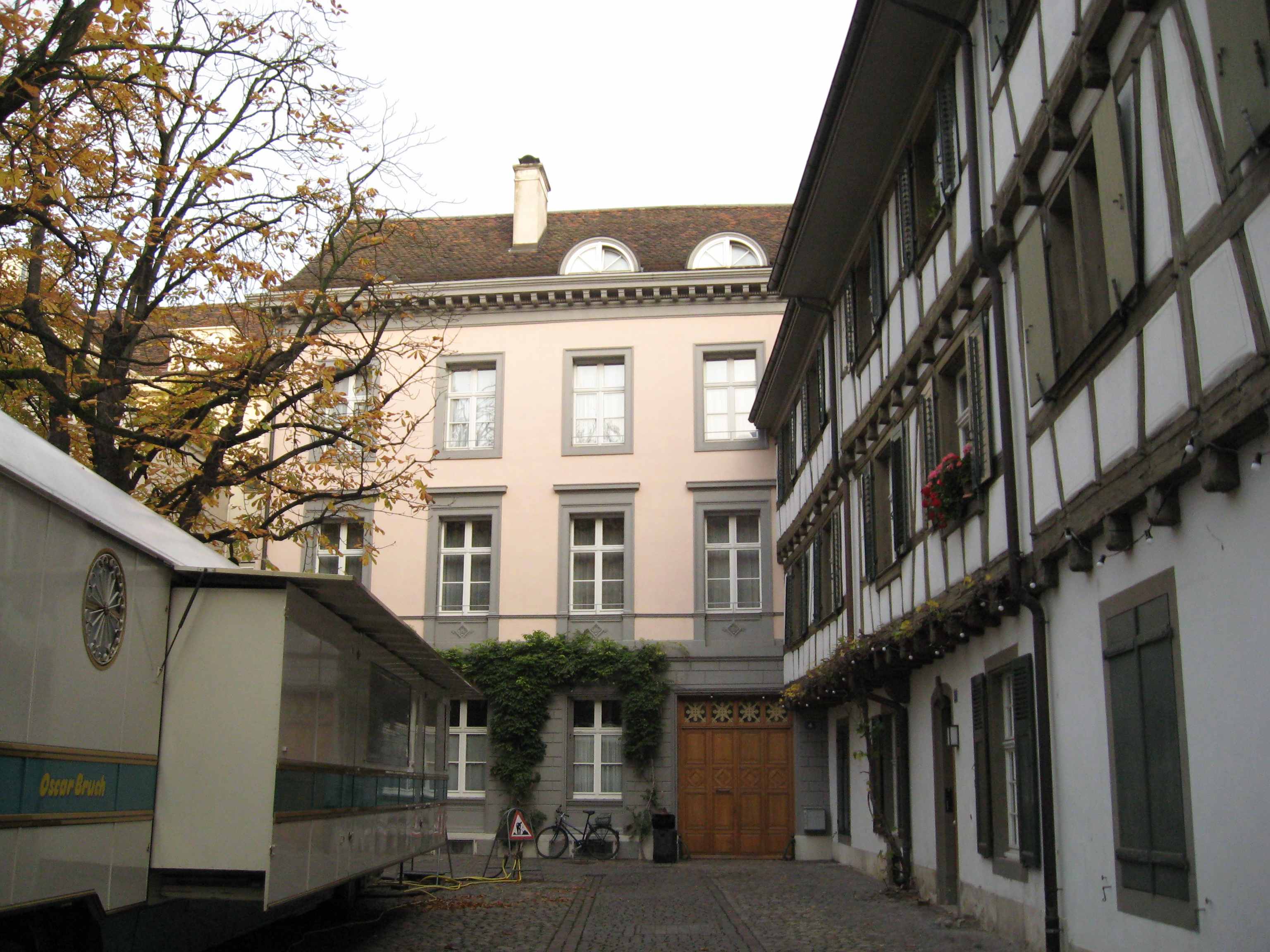
ON THE TRAIN FROM BASEL TO HAMBURG – For years I’ve wanted to visit the Paul Sacher Stiftung in Basel and look through the Conlon Nancarrow archive there, full of manuscripts that I last saw in his studio in 1994, while he was still alive. I’ve finally done it. It wasn’t quite the cornucopia I had imagined. While all of the official works in his oeuvre have been catalogued, the great bulk of his papers await classification. Hit-and-run interlopers like myself, Nancarrow book or no Nancarrow book, aren’t allowed to charge in and start throwing precious manuscripts around. I had to request specific folders like anyone else, and was unable to satisfy my mind on many mysteries of the man’s music that continue to puzzle me.
However, I found myself working elbow-to-elbow with two other Nancarrow experts: Dragana Stojanovic-Novicic of the University of the Arts at Belgrade, a surprisingly knowledgeable aficionado of American music who is writing monographs on both Nancarrow and the trombonist-composer Vinko Globokar; and Wolfgang Heisig, a fellow composer from outside Berlin who writes copiously for player piano. We quickly gravitated toward each other and indulged heady conversations relentless in their musicological detail. No need to remind us that Nancarrow published only five articles in Modern Music, nor that it was between Studies Nos. 21 and 22 that he filed off the limiting notches on his roll-punching machine: we all knew all about it. Any divergences of opinion we ran across were so picayune as to require a microscope. And so we, an American, a Serb, and a German in Switzerland, spent every precious available moment in the bowels of the Sacher Stiftung, poring over Conlon’s piano rolls – the rolletariat, Wolfgang dubbed us – and spent our evenings at restaurants comparing notes and stories.
Dragana knows my books better than I remember them myself, and was at no loss for conversing about a figure as obscure as Dane Rudhyar, which is more than I would be able to say for all but a very few American musicologists. She’s going through Conlon’s correspondence, and was able to relate detailed content of letters I wrote to the great man from 1988 on, letters of which I have no memory. I was forced to admit she knows details of my relationship with him better than I do. (I figured at least she didn’t have the letters Conlon wrote me, because they’re sitting at home in my file cabinet, but it turns out he made copies before sending them – perhaps showing more concern for posterity than he generally evidenced?) Wolfgang gives concerts of the Player Piano Studies on his player piano – not a Disklavier – and he’s convinced that the methods of translating the rolls into MIDI information aren’t sufficiently accurate. So for years he’s been painstakingly copying the piano rolls by hand, tracing them with various tools onto transparent paper. He’s even restored some notes included in Conlon’s scores, but that Conlon neglected to transfer to the piano rolls, so Wolfgang prides himself that his rolls are even more complete and accurate than Conlon’s own. Wolfgang has even made a piano roll of my Disklavier piece Texarkana. I hope to hear it someday on the more authentic instrument.
As for my own research, I managed to type a complete copy into Sibelius of Para Yoko, a 1992 player piano piece that I was never able to photocopy while Conlon was alive, as well as pore over the long-lost manuscript of Study No. 13, and give a few baffled glances at the original player-piano score of his final work, the Quntet for the Parnassus ensemble. If I ever write another article about Nancarrow, it will be an annotated, rhythmically precise score of Study #41, and I was also able in a couple of days to gather all the numerical information I needed from the work’s punching score to accomplish that. That’s Conlon’s best and most important work, in my opinion, from among the ones whose final score (as published in Soundings) gives only an approximate and insufficient idea of the actual rhythms involved. The scores of his late works scatter notes in proportional time notation as though they were thrown down in a fit of inspiration, but analysis of the earlier punching score shows that he always had in mind a rigorously beat-oriented tempo conception. An annotated score of that piece (also needed for Studies 20, 25, 28, 29, 42, 45, 46, 47, and others) would make that clear, and is necessary to nail down exactly what Nancarrow accomplished.
Stiftung director Felix Meyer apprised me of a raft of new Nancarrow recordings that will be appearing shortly, bringing to light hitherto unknown pieces and new versions of old pieces. And he confirmed that the recent “mystery piece” that appeared in the tape used by the Merce Cunningham dance that I recently wrote about was an early study, originally called No. 3, abandoned, and in more recent years resurrected as an homage piece titled For Ligeti. You would have thought that Nancarrow’s official 65 works, almost all for one instrument, represented as cut-and-dried an output as the 20th century afforded, but an army of researchers is proving that we’ve so far only scratched the surface.

The Sacher Stiftung
